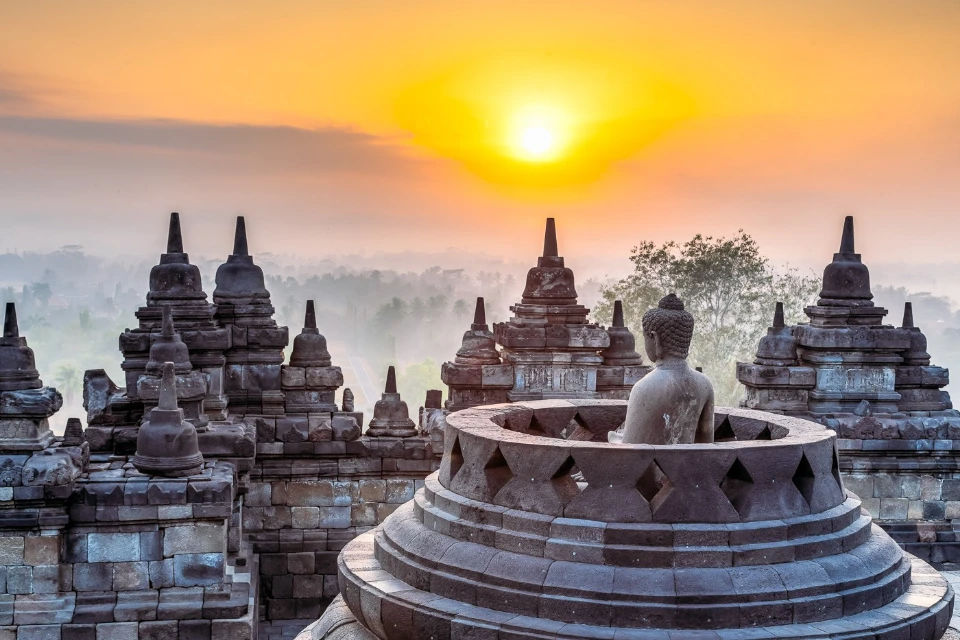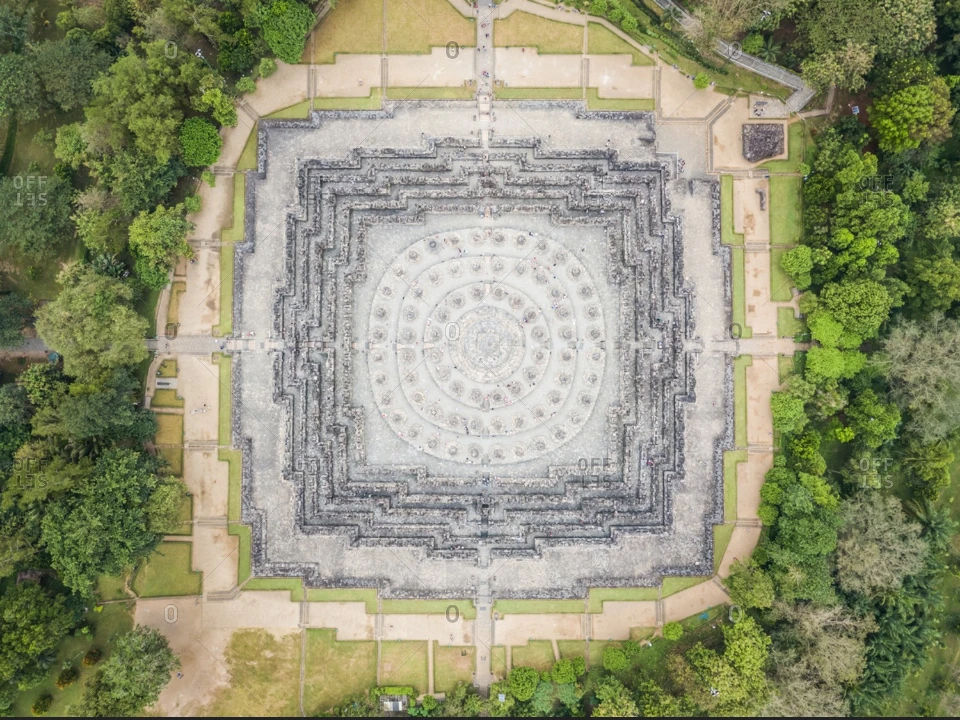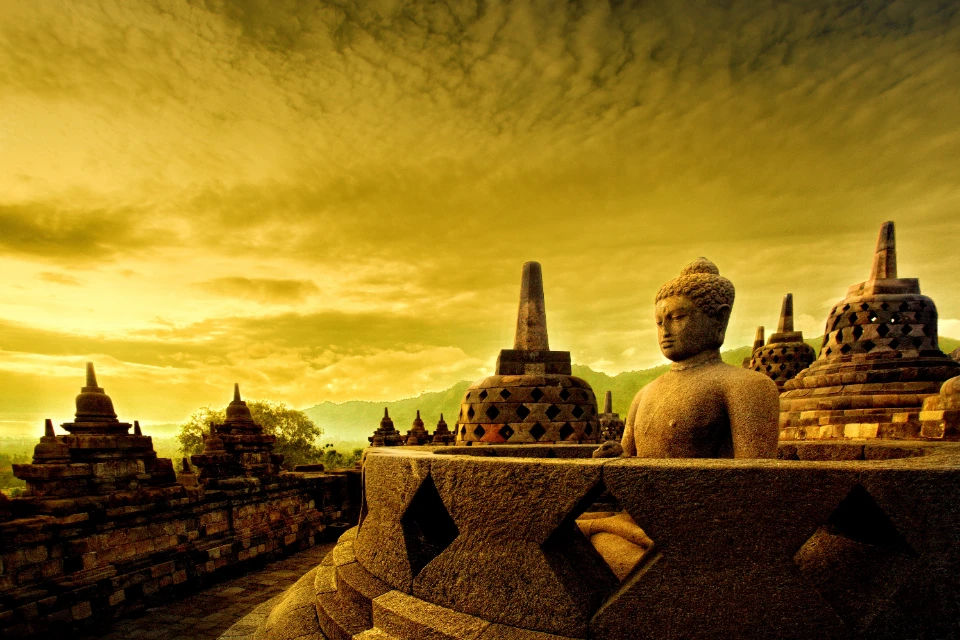Borobudur Temple is Indonesia’s most iconic and awe-inspiring Buddhist monument. As the largest Buddhist temple in the world and a UNESCO World Heritage Site, it stands as a testament to Indonesia’s rich cultural and religious history.

Nestled in Central Java, near Yogyakarta, Borobudur attracts millions of visitors each year, offering a spiritual and historical journey through its stunning architecture and intricate carvings.
History of Borobudur
Built in the 9th century during the rule of the Sailendra Dynasty, Borobudur reflects the height of Mahayana Buddhist influence in Indonesia. The temple was mysteriously abandoned around the 14th century, possibly due to volcanic eruptions and the rise of Islam in the region. It remained hidden under layers of volcanic ash and jungle growth until its rediscovery in the early 19th century by Sir Thomas Stamford Raffles, the British Governor of Java at the time. Restoration efforts led by UNESCO in the 1970s have preserved this masterpiece, making it one of the most important heritage sites in the world today.
Architecture and Design
Borobudur is designed in the form of a Mandala, symbolizing the Buddhist concept of the universe.

The temple consists of three main levels:
- Kamadhatu (The World of Desires): The base level, depicting earthly desires and human suffering through intricate relief panels.
- Rupadhatu (The World of Forms): The middle terraces, symbolizing the transition from material to spiritual life, adorned with 432 Buddha statues and detailed carvings.
- Arupadhatu (The World of Formlessness): The uppermost level, representing enlightenment, featuring 72 stupas with a Buddha statue inside each.
The entire structure comprises over 2,600 relief panels and more than 500 Buddha statues, narrating Buddhist teachings and stories from the Jataka tales.
Religious and Cultural Significance
Borobudur remains an important pilgrimage site for Buddhists, particularly during the annual Vesak festival, celebrating the birth, enlightenment, and passing of Gautama Buddha. The temple symbolizes the Buddhist journey toward Nirvana, guiding visitors through its nine stacked platforms, culminating at the grand central stupa. Beyond religion, Borobudur plays a significant role in Indonesia’s cultural identity and attracts scholars, historians, and spiritual seekers from around the world.
How to Visit Borobudur
Borobudur is located approximately 40 kilometers from Yogyakarta and is easily accessible by car or bus.

Visitors can experience the temple at different times of the day, but sunrise and sunset offer the most breathtaking views, casting a golden glow over the ancient structure.
- Entrance Fees: Fees vary for international and local tourists, with additional costs for sunrise or guided tours.
- Opening Hours: Typically from 6:00 AM to 5:00 PM.
- Nearby Attractions: Travelers can also explore the Prambanan Temple, Mount Merapi, and Yogyakarta’s vibrant cultural scene.
Travel Tips for Tourists
- Dress Code & Etiquette: As a sacred site, visitors should dress modestly, covering shoulders and knees.
- Best Time to Visit: Dry season (May to September) is ideal for exploring without the interruption of rain.
- Photography Tips: Arrive early to capture stunning sunrise shots and avoid crowds.
- Guided Tours: Hiring a local guide enhances the experience with in-depth historical and cultural insights.
Conclusion
Borobudur Temple stands as a magnificent fusion of art, spirituality, and history. Its grandeur and deep religious significance make it a must-visit destination for travelers seeking to explore Indonesia’s cultural heritage. Whether you’re drawn to its architectural beauty, spiritual essence, or historical depth, a journey to Borobudur is an unforgettable experience that connects the past with the present.
FAQs
1. Why is Borobudur famous?
Borobudur is the world’s largest Buddhist temple, renowned for its intricate carvings, historical significance, and spiritual importance.
2. How do I get to Borobudur from Yogyakarta?
You can reach Borobudur by car, bus, or private tour from Yogyakarta, which is about an hour’s drive away.
3. What are the best hotels near Borobudur?
Popular accommodations include Plataran Borobudur Resort & Spa, Manohara Resort, and Amata Borobudur.
4. Is Borobudur still an active place of worship?
Yes, it is an active pilgrimage site, especially during the annual Vesak festival.